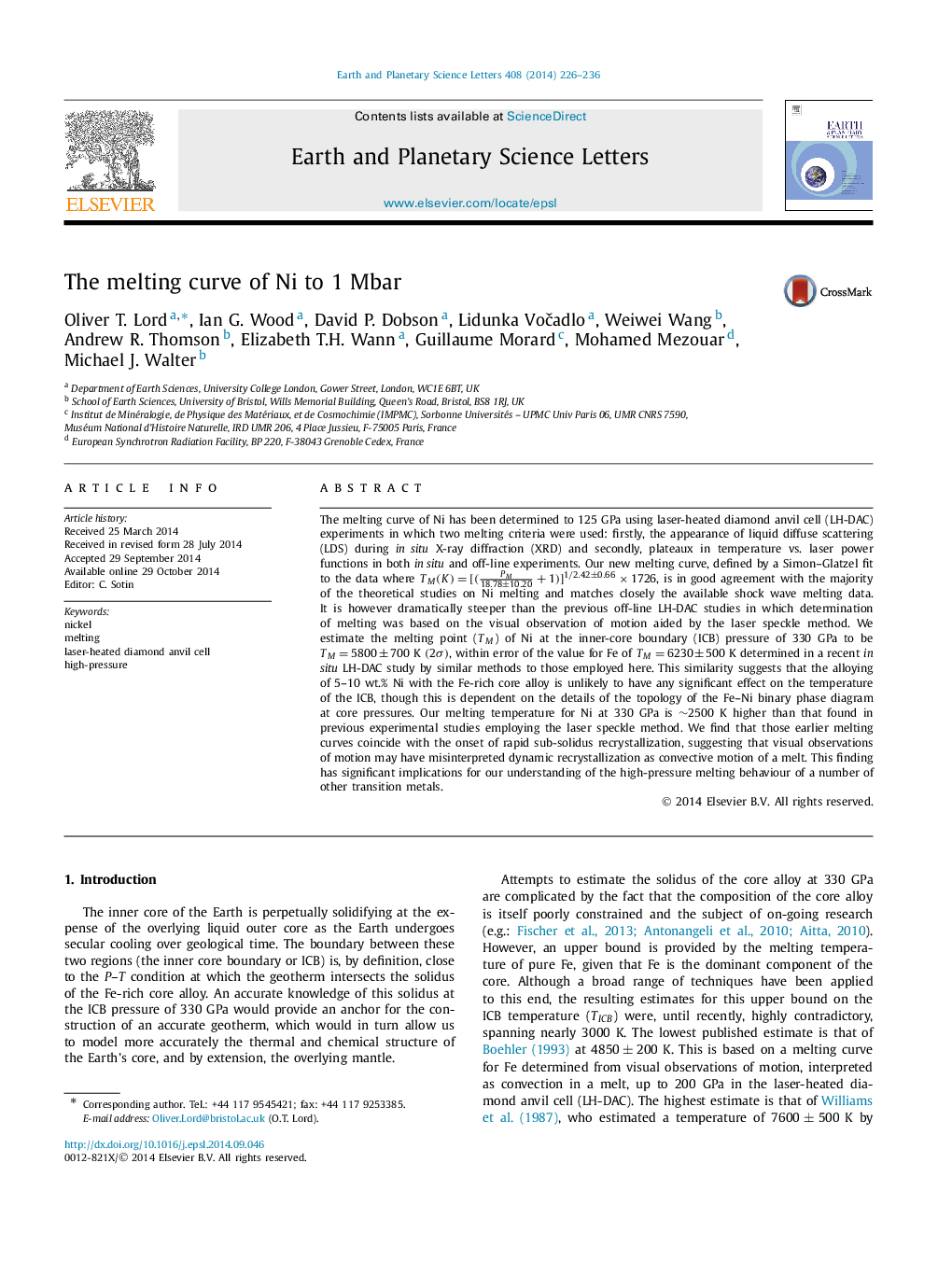| کد مقاله | کد نشریه | سال انتشار | مقاله انگلیسی | نسخه تمام متن |
|---|---|---|---|---|
| 6428703 | 1634748 | 2014 | 11 صفحه PDF | دانلود رایگان |

- We have determined the melting curve of Ni up to 125 GPa.
- We use both plateaux in T vs. laser power functions and liquid diffuse scattering as melting criteria.
- Our new melting curve agrees with the majority of MD and shock data.
- Our new melting curve is significantly steeper than studies using the laser-speckle method.
The melting curve of Ni has been determined to 125 GPa using laser-heated diamond anvil cell (LH-DAC) experiments in which two melting criteria were used: firstly, the appearance of liquid diffuse scattering (LDS) during in situ X-ray diffraction (XRD) and secondly, plateaux in temperature vs. laser power functions in both in situ and off-line experiments. Our new melting curve, defined by a Simon-Glatzel fit to the data where TM(K)=[(PM18.78±10.20+1)]1/2.42±0.66Ã1726, is in good agreement with the majority of the theoretical studies on Ni melting and matches closely the available shock wave melting data. It is however dramatically steeper than the previous off-line LH-DAC studies in which determination of melting was based on the visual observation of motion aided by the laser speckle method. We estimate the melting point (TM) of Ni at the inner-core boundary (ICB) pressure of 330 GPa to be TM=5800±700 K(2Ï), within error of the value for Fe of TM=6230±500 K determined in a recent in situ LH-DAC study by similar methods to those employed here. This similarity suggests that the alloying of 5-10 wt.% Ni with the Fe-rich core alloy is unlikely to have any significant effect on the temperature of the ICB, though this is dependent on the details of the topology of the Fe-Ni binary phase diagram at core pressures. Our melting temperature for Ni at 330 GPa is â¼2500 K higher than that found in previous experimental studies employing the laser speckle method. We find that those earlier melting curves coincide with the onset of rapid sub-solidus recrystallization, suggesting that visual observations of motion may have misinterpreted dynamic recrystallization as convective motion of a melt. This finding has significant implications for our understanding of the high-pressure melting behaviour of a number of other transition metals.
Journal: Earth and Planetary Science Letters - Volume 408, 15 December 2014, Pages 226-236